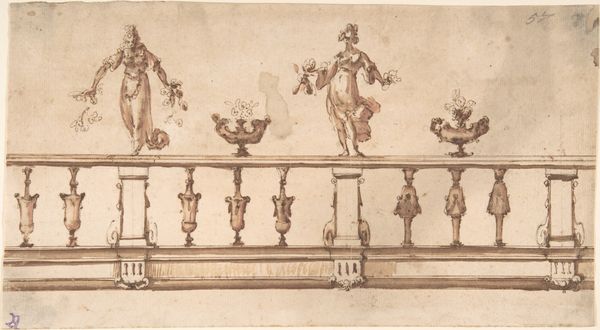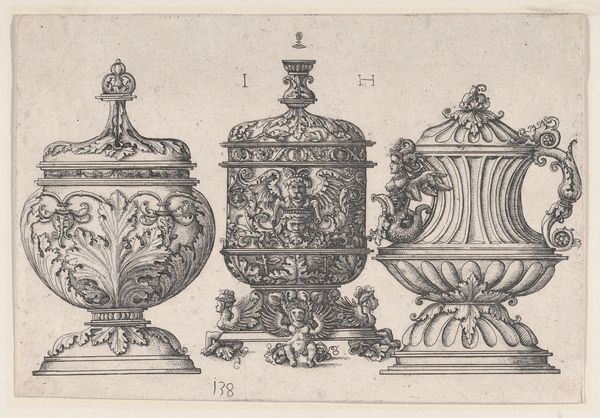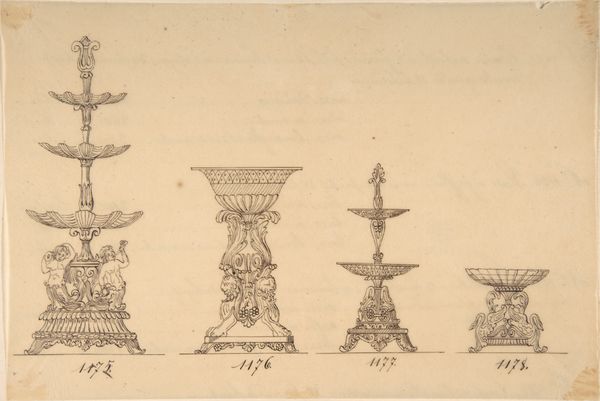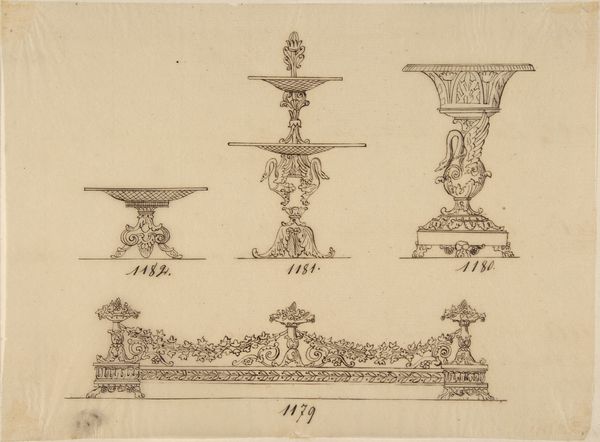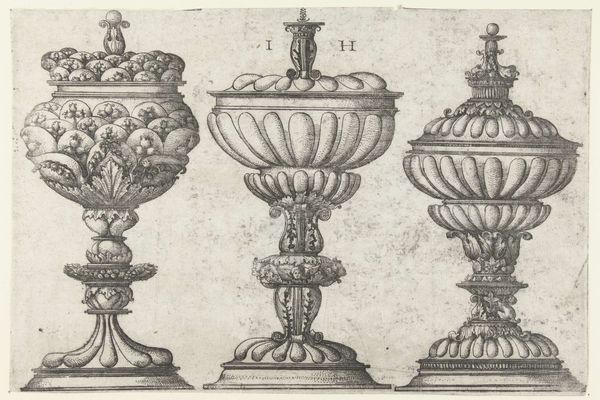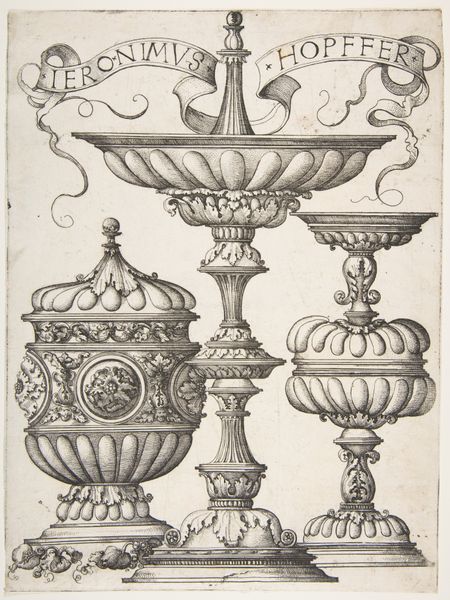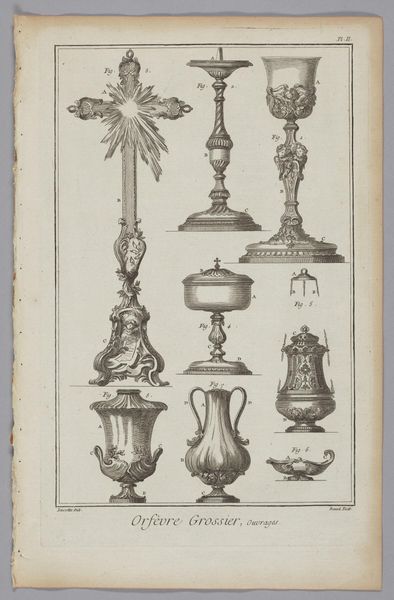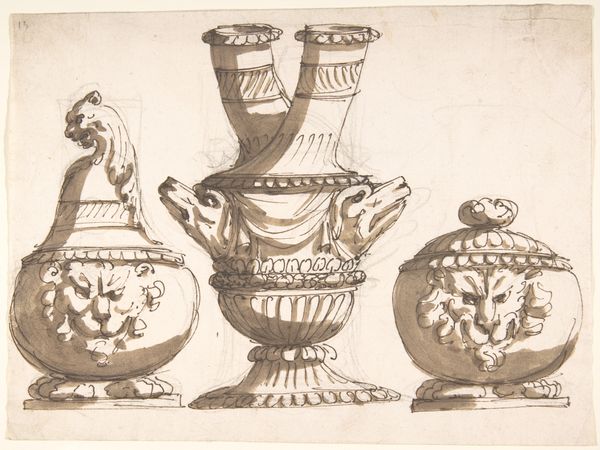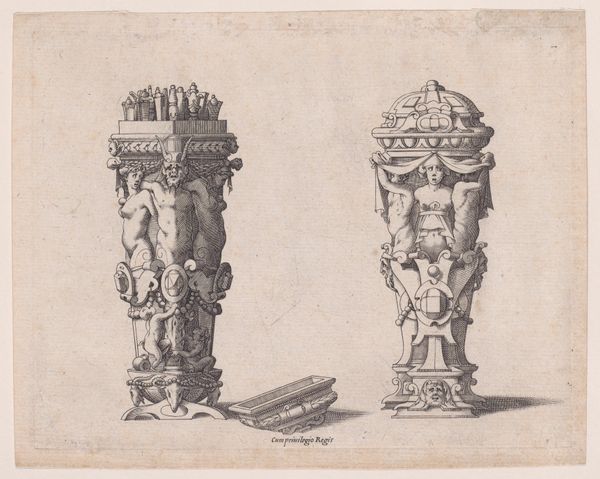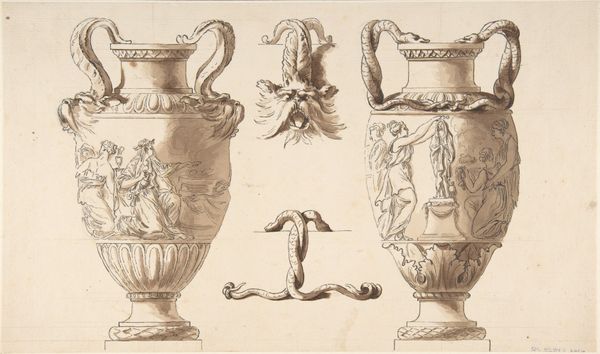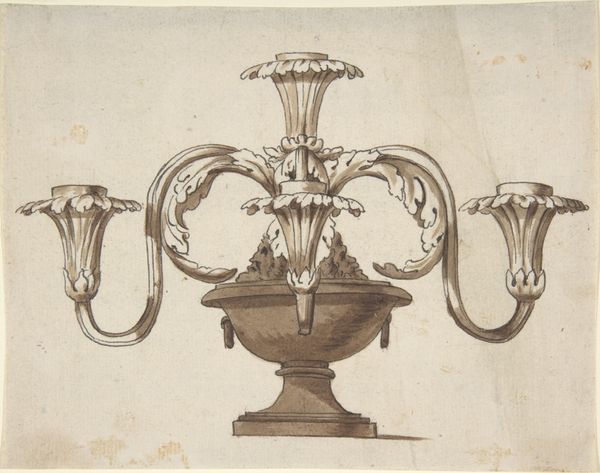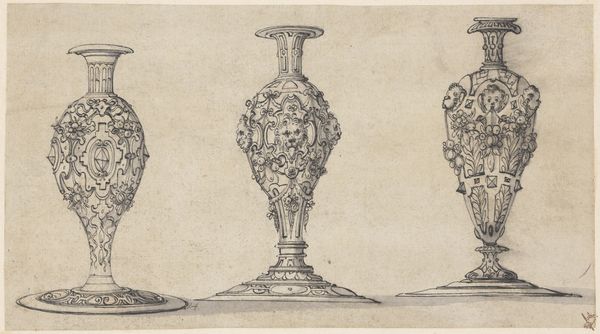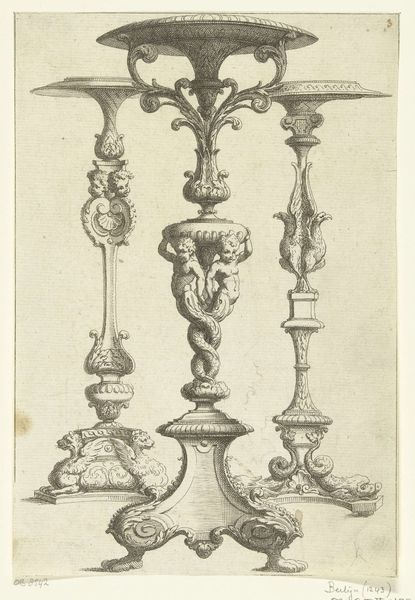
drawing, coloured-pencil, print
#
drawing
#
coloured-pencil
#
water colours
# print
#
11_renaissance
#
coloured pencil
#
academic-art
#
decorative-art
#
miniature
Dimensions: 6 11/16 x 14 in. (17 x 35.6 cm)
Copyright: Public Domain
Curator: What strikes me immediately is the almost clinical detachment in the rendering of these objects. They are presented with such precise lines and even lighting that it reads more as a record than a celebration of beauty. Editor: It seems utilitarian in its elegance, if that makes sense. Well, let’s provide some context. This is a drawing entitled "Studies for Decorative Arts Objects," dating roughly from 1600 to 1700. It resides here at the Metropolitan Museum of Art. The medium appears to be coloured pencil. Curator: Coloured pencil provides a very particular kind of finish, doesn’t it? You get this buildable texture. Thinking about these objects and how they were constructed, presumably by artisans who weren’t granted the elevated status of “artist”, how were those skills passed on? This drawing could have functioned as an instructional guide within a workshop setting. Editor: Exactly. I agree completely that it highlights the artisanal labor of the time and I imagine that such drawings functioned as crucial tools in the workshop. This piece raises questions about who has access to luxury items and the system that creates them. Were these designs destined for specific patrons, therefore reflecting certain cultural ideals? How were they marketed? Curator: The figures incorporated into the designs certainly suggest a level of elite commissioning. I'm drawn to the contrast between the clean lines of the vessels and the somewhat stiff, awkward rendering of the figures. I see it as almost symbolic of the division of labor and artistic input, the vessels showing expert design. Editor: The institutional and social roles of these objects would have been tightly interwoven. From princely courts to emerging merchant elites, decorative art became central to defining identity and demonstrating prestige. The presence of those armed figures also suggests more overtly political power statements. Curator: Thinking materially again, these are, ultimately, just lines on paper meant to catalyze actual objects that were intended to then be put into use or onto display for functional utility. It creates an interesting remove between intention and execution, a plan of design which highlights human making. Editor: Yes, and for me, it calls attention to the political power of the time. How artistic styles were deployed as signals, branding even, for particular courts, rulers, and ideologies. Thanks for helping reveal the depths beneath the surface. Curator: Likewise. Examining artistic methods alongside history makes us question long held conventions around artistry itself.
Comments
No comments
Be the first to comment and join the conversation on the ultimate creative platform.
